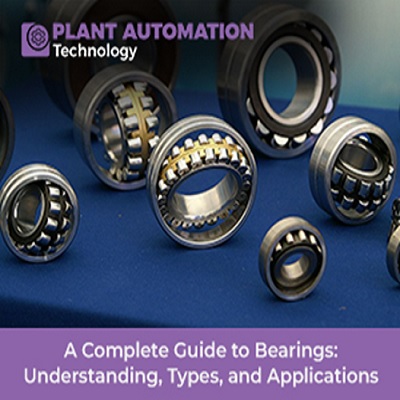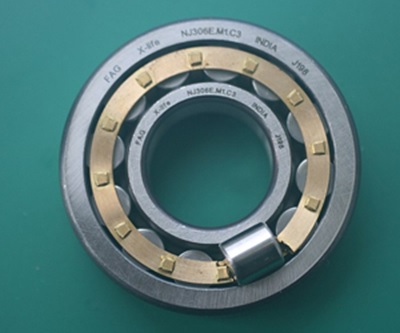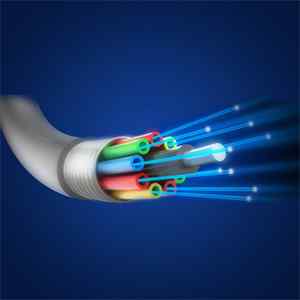A Complete Guide to Bearings: Understanding, Types, and Applications – Part I

Introduction
Bearings are fundamental mechanical components that hold immense significance across various industries and applications. From automotive and industrial machinery to aerospace and power generation, bearings play a critical role in enabling smooth rotational motion while minimizing friction. They are the silent heroes that support heavy loads, transmit forces efficiently, and enhance machinery performance and longevity.
Imagine a world without bearings. The wheels of an automobile grinding against the axle, the rotating components of industrial machinery struggling to move, or the flight control systems of an aircraft operating with excessive resistance. These scenarios illustrate the vital role bearings play in ensuring seamless motion, reducing energy loss, and contributing to overall efficiency.
Whether it's the ball bearings in electric motors, the roller bearings in automotive wheel hubs, or the specialized bearings in turbine engines, each application relies on bearing technology principles to enable efficient and reliable operation. Understanding the principles, types, and applications of bearings is essential for engineers, technicians, and enthusiasts alike to effectively navigate the vast world of mechanical systems.
In this comprehensive guide to bearings, we will delve into the intricacies of these mechanical marvels. We will explore the different types of bearings, such as ball bearings and roller bearings, and their diverse configurations that cater to specific needs. Furthermore, we will examine their applications across various industries, from automotive and industrial machinery to aerospace and power generation.
| Also Read: Emerging Trends and Advances in Bearing Technology – Part II |
By gaining a deeper understanding of bearings, you will be equipped with the knowledge necessary to optimize performance, select the right bearings for specific applications, and ensure proper maintenance practices. So, let's embark on a journey into the fascinating realm of bearings and unlock the secrets behind their seamless motion and reliable support.
Understanding bearings
Bearings are mechanical devices designed to facilitate rotational motion while minimizing friction. They are found in countless applications, from automobiles to industrial machinery and beyond. Bearings support rotating components and transmit forces efficiently. By reducing friction and wear, they enhance performance and prolong the machinery’s lifespan.
Types of bearings
1. Ball Bearings: Smooth Motion and Reduced Friction

Ball bearings are among the most common and widely used bearing types. They employ spherical rolling elements, known as balls, to enable smooth rotational motion and minimize friction. Ball bearings distribute loads over a large surface area, resulting in reduced friction and increased efficiency.
Ball bearings come in various configurations to cater to different application requirements:
- Deep Groove Ball Bearings: These bearings have a deep, uninterrupted raceway groove, making them suitable for high-speed and radial load applications. They are commonly used in electric motors, pumps, and household appliances.
- Angular Contact Ball Bearings excel at handling both radial and axial loads, making them well-suited to applications that involve a combination of these forces. They are extensively utilized in various industries, including automotive components, machine tools, and industrial machinery, due to their versatility and capability.
- Thrust Ball Bearings, on the other hand, are designed to endure axial loads in one direction. They play a crucial role in applications such as automotive transmissions, industrial pumps, and aerospace systems. These bearings ensure the efficient transfer of forces in a specific direction, providing stability and precise control.
2. Roller Bearings: Diverse Designs for Different Applications

Roller bearings, as the name suggests, utilize cylindrical, tapered, or spherical rolling elements to support loads and enable smooth rotation. These bearings are known for their high load-carrying capacity and ability to handle different types of loads, including radial and axial.
- Cylindrical Roller Bearings: These bearings have a high radial load capacity and are commonly used in heavy machinery applications such as crushers, conveyors, and gearboxes. They provide excellent shock resistance and are suitable for high-speed operations.
- Tapered Roller Bearings: These can handle both radial and axial loads, making them highly versatile for a wide range of applications. They are commonly utilized in automotive wheel bearings, truck transmissions, and machine tool spindles, where their versatility and reliability are valued.
- Spherical Roller Bearings, on the other hand, are specifically designed to accommodate misalignment and heavy loads. These bearings are extensively employed in vibrating machinery, paper mills, and mining equipment. With their self-alignment capability, they effectively handle shaft deflection and misalignment, enhancing overall performance and reliability in demanding environments.
Applications of bearings
1. Automotive Industry: Bearings are integral components in the automotive industry, found in engines, transmissions, wheels, and suspension systems. They enable smooth operation, reduce energy loss, and contribute to fuel efficiency. Without bearings, engines and wheels would rotate slower, leading to increased friction, decreased performance, and potential mechanical failures.
2. Industrial Machinery: Bearings play a vital role in various machinery, including pumps, compressors, conveyors, and machine tools. They support heavy loads, ensure precise movement, and enhance productivity. For example, in conveyor systems, bearings facilitate smooth material movement, reducing friction and enabling efficient operation. Precision machine tools require accurate positioning and smooth motion, ensuring high-quality manufacturing processes.
3. Aerospace and Aviation: The aerospace and aviation sectors rely heavily on bearings for critical applications. Bearings are essential in turbine engines, landing gear systems, and flight control mechanisms. In turbine engines, bearings support the rotating shafts, ensuring smooth rotation and minimizing friction and heat generation. In landing gear systems, bearings allow for the smooth retraction and extension of landing gear components. In flight control systems, bearings enable precise movement of control surfaces, ensuring safe and efficient flight operations.
4. Power Generation: Bearings are indispensable in power generation systems, including wind turbines, hydroelectric plants, and gas turbines. In wind turbines, bearings support the rotation of the blades, converting wind energy into electrical power. In hydroelectric plants, bearings facilitate turbine movement, enabling efficient water flow conversion into electricity. Gas turbine bearings support rotating components, allowing combustion power generation. Without bearings, power generation systems would experience excessive friction, reduced efficiency, and mechanical failures.
5. Robotics and Automation: The precision and reliability demanded by robotics and automation systems rely heavily on bearings. Bearings are extensively used in robotic arms, CNC machines, and assembly line equipment. They enable accurate positioning, smooth motion, and reduced vibration, ensuring automated processes' efficiency and accuracy. Robotic arms use bearings to move and manipulate objects. In CNC machines, bearings support the spindle and guide the tooling, ensuring precise cutting and shaping operations. In assembly line equipment, bearings enable smooth conveyance and movement of products, improving production efficiency.
Factors to Consider in Bearing Selection
Load Capacity and Speed Requirements
One of the primary factors to consider when selecting bearings is the anticipated load capacity and speed requirements of the application. Bearings must support expected loads without excessive deformation or premature wear. Additionally, the rotational speed of the application should be within the bearing's permissible limits to ensure reliable and efficient operation. Manufacturers provide load and speed ratings for their bearings. This enables engineers and designers to select the appropriate bearing type and size based on the specific requirements of the application.
Environmental Conditions and Temperature Limits
The application's operating environment plays a crucial role in bearing selection. Consider factors such as temperature, humidity, exposure to contaminants, and corrosion potential. For example, high-temperature applications require bearings capable of withstanding elevated temperatures without compromising performance or lubrication properties. In corrosive environments, bearings with appropriate corrosion-resistant materials or protective coatings may be necessary to ensure long-term reliability. By considering the environmental conditions, engineers can choose bearings specifically designed to withstand the challenges posed by the operating environment.
Lubrication and Maintenance Considerations
Proper lubrication is critical for optimal bearing performance and longevity. Bearings rely on lubricants to reduce friction, dissipate heat, and prevent metal-to-metal contact. When selecting bearings, it's essential to consider the application's lubrication requirements. Some bearings require external lubrication systems, while others are self-lubricating or pre-greased. Engineers should choose the appropriate lubricant type, viscosity, and re-lubrication intervals based on the operating conditions and expected service life of the bearing. Regular maintenance practices, including lubricant replenishment and contamination prevention, are crucial for ensuring bearing performance and reliability.
Installation and Maintenance
Proper installation and maintenance practices are essential for optimal bearing performance and longevity. By following manufacturer guidelines and implementing appropriate maintenance procedures, you can prevent premature wear, reduce failure risk, and maximize machinery efficiency. Here are some key considerations.
1. Proper Installation Techniques
When installing bearings, it is crucial to follow the manufacturer's guidelines and recommendations. This includes using the correct mounting and dismounting procedures, ensuring proper alignment of the bearing components, and applying the appropriate tightening torque for fasteners. Improper installation can lead to misalignment, increased bearing stress, and accelerated wear. By adhering to the recommended installation techniques, you can ensure the bearings are properly seated and aligned, setting a solid foundation for their performance.
2. Regular Inspection and Maintenance Practices
Regular inspection and maintenance practices play a crucial role in identifying early indications of wear, misalignment, or damage to bearings. It is essential to keep track of operating conditions, such as temperature, vibration, and noise levels. Visual inspections should be conducted to detect any signs of lubrication leakage, discoloration, or abnormal wear patterns. Implementing a maintenance schedule that includes cleaning, replenishing lubrication, and conducting torque checks is critical. By regularly performing inspections and maintenance, potential issues can be detected early and addressed promptly, preventing more severe problems.
3. Troubleshooting Common Issues and Failures
To effectively troubleshoot bearing problems, it is crucial to know common issues and failure modes. Keep a close eye on the bearing temperature during operation, as overheating can be a sign of inadequate lubrication, excessive loads, or misalignment. Make sure you investigate any unusual noises, vibrations, or performance changes. By addressing these issues promptly, you can prevent further damage, extend the bearing lifespan, and minimize costly equipment downtime.
Lubrication Methods for Bearings
Proper lubrication is critical for optimal bearing performance and longevity. Bearings rely on lubricants to reduce friction, dissipate heat, and prevent metal-to-metal contact. When selecting bearings, it's essential to consider lubrication requirements. Some bearings require external lubrication systems, while others are self-lubricating or pre-greased. Engineers should choose the appropriate lubricant type, viscosity, and re-lubrication intervals based on the operating conditions and expected service life of the bearing. Regular maintenance practices, including lubricant replenishment and contamination prevention, are crucial for bearing performance and reliability.
1. Grease Lubrication
Grease is a popular lubricant for bearings due to its ability to retain consistency and provide long-lasting lubrication. Grease forms a protective film between bearing surfaces, reducing friction and preventing metal-to-metal contact. It also seals out contaminants and protects against corrosion. Regular re-greasing is necessary to maintain optimal lubrication levels.
2. Oil Lubrication
Oil lubrication involves using bearing oils. Oil lubrication offers excellent heat dissipation and is suitable for high-speed applications. Oil lubrication systems can be oil baths or circulating oil systems, depending on the application. Continuous monitoring of oil levels and regular oil changes is essential for proper lubrication.
3. Solid Lubricants
Certain applications, such as high-temperature or extreme environments, may require solid lubricants like graphite or molybdenum disulfide. These lubricants provide a dry film coating that reduces friction and wear, even under challenging conditions. Solid lubricants are commonly used in the aerospace, automotive, and food processing industries.
Common Bearing Failure Modes
Understanding common bearing failure modes can help identify potential issues and take appropriate corrective measures. Here are some common failure modes:
1. Fatigue Failure: Fatigue failure occurs due to repeated bearing loading and unloading, leading to cracks and ultimately complete failure. Factors such as excessive loads, inadequate lubrication, or improper mounting can contribute to fatigue failure. Regular inspection and monitoring can detect early signs of fatigue failure.
2. Overheating: Overheating can cause premature bearing failure. It can be caused by factors such as excessive friction, inadequate lubrication, or incorrect lubrication clearance. Monitoring bearing temperature regularly and addressing abnormal heat buildup is crucial to preventing overheating-related failures.
3. Contamination: Contaminants such as dust, dirt, water, or metal particles can enter the bearing, leading to increased friction, wear, and corrosion. Proper sealing, regular cleaning, and effective maintenance practices can minimize contamination-related failure risks.
4. Misalignment: Misalignment occurs when the bearing's inner and outer rings are not aligned correctly. This can lead to increased stress, uneven load distribution, and premature wear. Proper installation and alignment techniques, such as precision alignment tools, can prevent misalignment-related failures.
Emerging Technologies in Bearing Design
The field of bearing technology is constantly evolving, driven by improved performance, efficiency, and reliability. Emerging technologies in bearing design are revolutionizing various industries and offering new possibilities for enhanced functionality. Here are some notable advancements:
1. Ceramic Bearings
Ceramic bearings have gained popularity due to their exceptional properties. They are known for their excellent hardness, corrosion resistance, and high-temperature tolerance. These characteristics make them ideal for demanding applications that require excellent performance and durability. Ceramic bearings offer reduced friction, allowing higher speeds and increased efficiency. They are commonly used in high-speed machinery, electric motors, aerospace systems, and other industries where reliability and performance are critical.
2. Magnetic Bearings
Magnetic bearings represent a groundbreaking technology that utilizes electromagnetic fields to suspend and guide the rotating shaft without physical contact. By eliminating traditional rolling elements, magnetic bearings offer several advantages. They provide virtually frictionless operation, reducing energy consumption and wear. Magnetic bearings are capable of high-speed rotation and precise control, making them suitable for applications requiring extreme precision and stability. Industries such as aerospace, power generation, and high-precision machinery use magnetic bearings to enhance performance and reliability.
3. Self-Lubricating Bearings
Self-lubricating bearings incorporate materials with inherent lubricating properties, eliminating external lubrication systems. These bearings are designed to provide continuous lubrication during operation, reducing friction and wear. They are particularly useful in applications where traditional lubrication methods are challenging or impractical. Self-lubricating bearings offer advantages such as reduced maintenance requirements, extended service life, and improved contamination resistance. They find applications in industries such as automotive, food processing, and heavy machinery, where reliable and maintenance-free operation is crucial.
4. Miniature and Micro Bearings for Compact Devices
The increasing demand for smaller and lighter devices has driven the development of miniature and micro bearings. These bearings are specifically designed for compact applications, including consumer electronics, medical devices, and aerospace technology. Despite their small size, they offer reliable performance and contribute to the devices' overall functionality. Miniature and micro bearings are engineered to withstand high speeds, provide precise movement, and support light loads. They are essential components in various micro-mechanical systems and contribute to advancements in technology and miniaturization.
5. Smart Bearings and Condition Monitoring Technologies
Advancements in sensor technology and data analytics have led to smart bearings and condition monitoring systems. These bearings are embedded with sensors that monitor key parameters such as temperature, vibration, and load. The real-time data collected by these sensors is analyzed to provide insights into the bearing's health, performance, and potential issues. This enables predictive maintenance strategies, where maintenance activities can be planned based on the actual bearing condition rather than predetermined schedules. Smart bearings and condition monitoring technologies enhance reliability, minimize downtime, and optimize maintenance practices in industries where continuous operation is critical.
Frequently Asked Questions (FAQs):
- What are the main differences between ball and roller bearings?
- How do I determine the appropriate bearing size for my application?
- Can bearings be re-greased, or do they require replacement?
- What are the common signs of bearing failure and how can they be prevented?
Conclusion
Bearings are indispensable components that enable smooth rotational motion, reduce friction, and enhance machinery performance and longevity. They find applications in a wide range of industries, including automotive, industrial machinery, aerospace, power generation, robotics, and more. By understanding the principles, types, and applications of bearings, engineers, technicians, and enthusiasts can make informed decisions regarding bearing selection, installation, and maintenance.
Factors such as load capacity, speed requirements, environmental conditions, and lubrication play a crucial role in bearing selection. Proper installation and maintenance practices are essential for optimal performance and longevity. Regular inspections, troubleshooting common issues, and adherence to lubrication guidelines are key to preventing premature failures and ensuring reliable operation.
The field of bearing technology continues to evolve with emerging advancements such as ceramic bearings, magnetic bearings, self-lubricating bearings, miniature and micro bearings, and smart bearings with condition-monitoring capabilities. These technologies offer improved performance, efficiency, and reliability, opening up new possibilities for various industries.
By delving into the intricacies of bearings and staying up-to-date with the latest advancements, individuals can unlock the secrets behind these mechanical marvels and harness their full potential in designing and operating efficient machinery.







